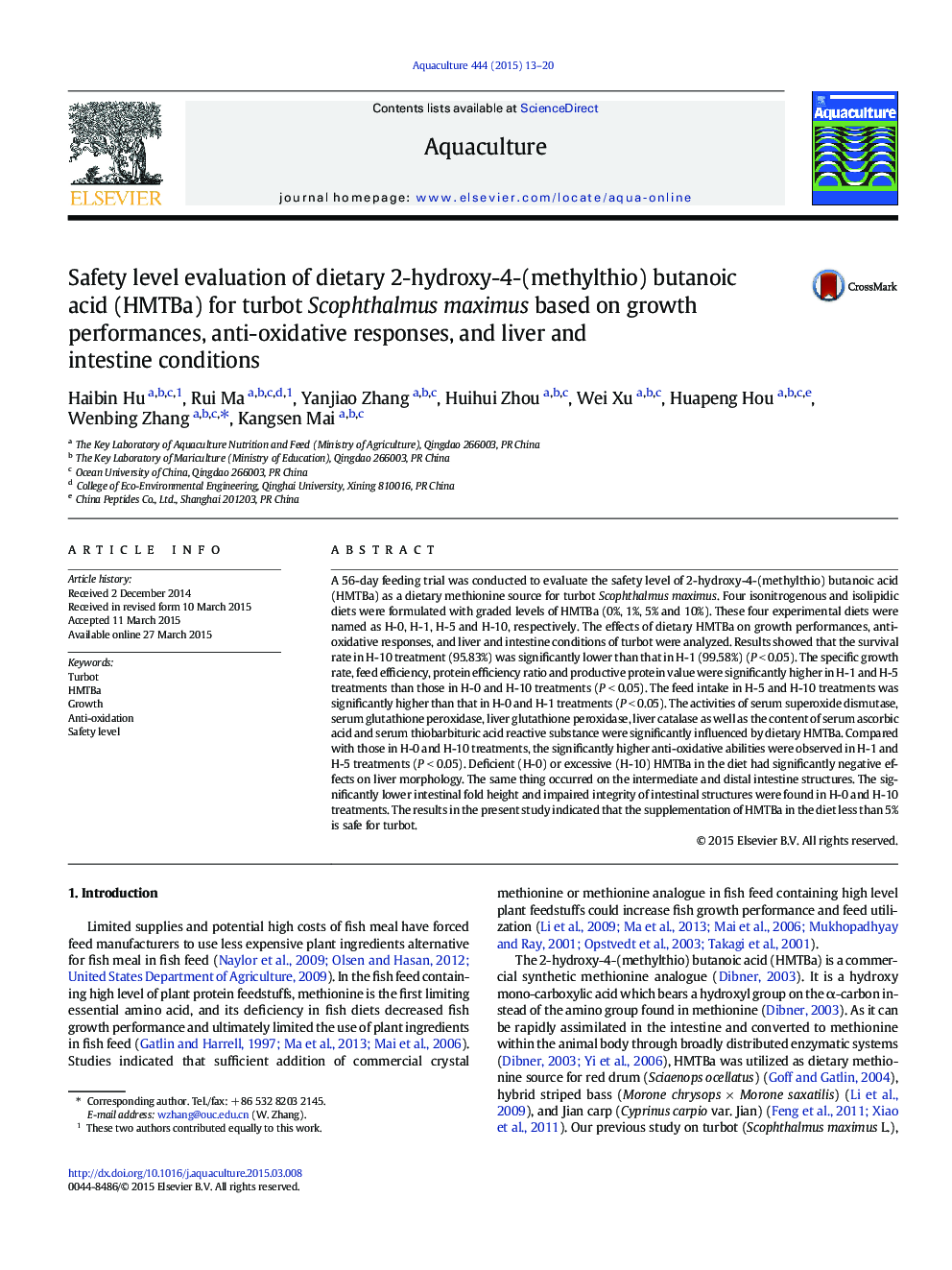| Article ID | Journal | Published Year | Pages | File Type |
|---|---|---|---|---|
| 8494641 | Aquaculture | 2015 | 8 Pages |
Abstract
A 56-day feeding trial was conducted to evaluate the safety level of 2-hydroxy-4-(methylthio) butanoic acid (HMTBa) as a dietary methionine source for turbot Scophthalmus maximus. Four isonitrogenous and isolipidic diets were formulated with graded levels of HMTBa (0%, 1%, 5% and 10%). These four experimental diets were named as H-0, H-1, H-5 and H-10, respectively. The effects of dietary HMTBa on growth performances, anti-oxidative responses, and liver and intestine conditions of turbot were analyzed. Results showed that the survival rate in H-10 treatment (95.83%) was significantly lower than that in H-1 (99.58%) (PÂ <Â 0.05). The specific growth rate, feed efficiency, protein efficiency ratio and productive protein value were significantly higher in H-1 and H-5 treatments than those in H-0 and H-10 treatments (PÂ <Â 0.05). The feed intake in H-5 and H-10 treatments was significantly higher than that in H-0 and H-1 treatments (PÂ <Â 0.05). The activities of serum superoxide dismutase, serum glutathione peroxidase, liver glutathione peroxidase, liver catalase as well as the content of serum ascorbic acid and serum thiobarbituric acid reactive substance were significantly influenced by dietary HMTBa. Compared with those in H-0 and H-10 treatments, the significantly higher anti-oxidative abilities were observed in H-1 and H-5 treatments (PÂ <Â 0.05). Deficient (H-0) or excessive (H-10) HMTBa in the diet had significantly negative effects on liver morphology. The same thing occurred on the intermediate and distal intestine structures. The significantly lower intestinal fold height and impaired integrity of intestinal structures were found in H-0 and H-10 treatments. The results in the present study indicated that the supplementation of HMTBa in the diet less than 5% is safe for turbot.
Related Topics
Life Sciences
Agricultural and Biological Sciences
Aquatic Science
Authors
Haibin Hu, Rui Ma, Yanjiao Zhang, Huihui Zhou, Wei Xu, Huapeng Hou, Wenbing Zhang, Kangsen Mai,
